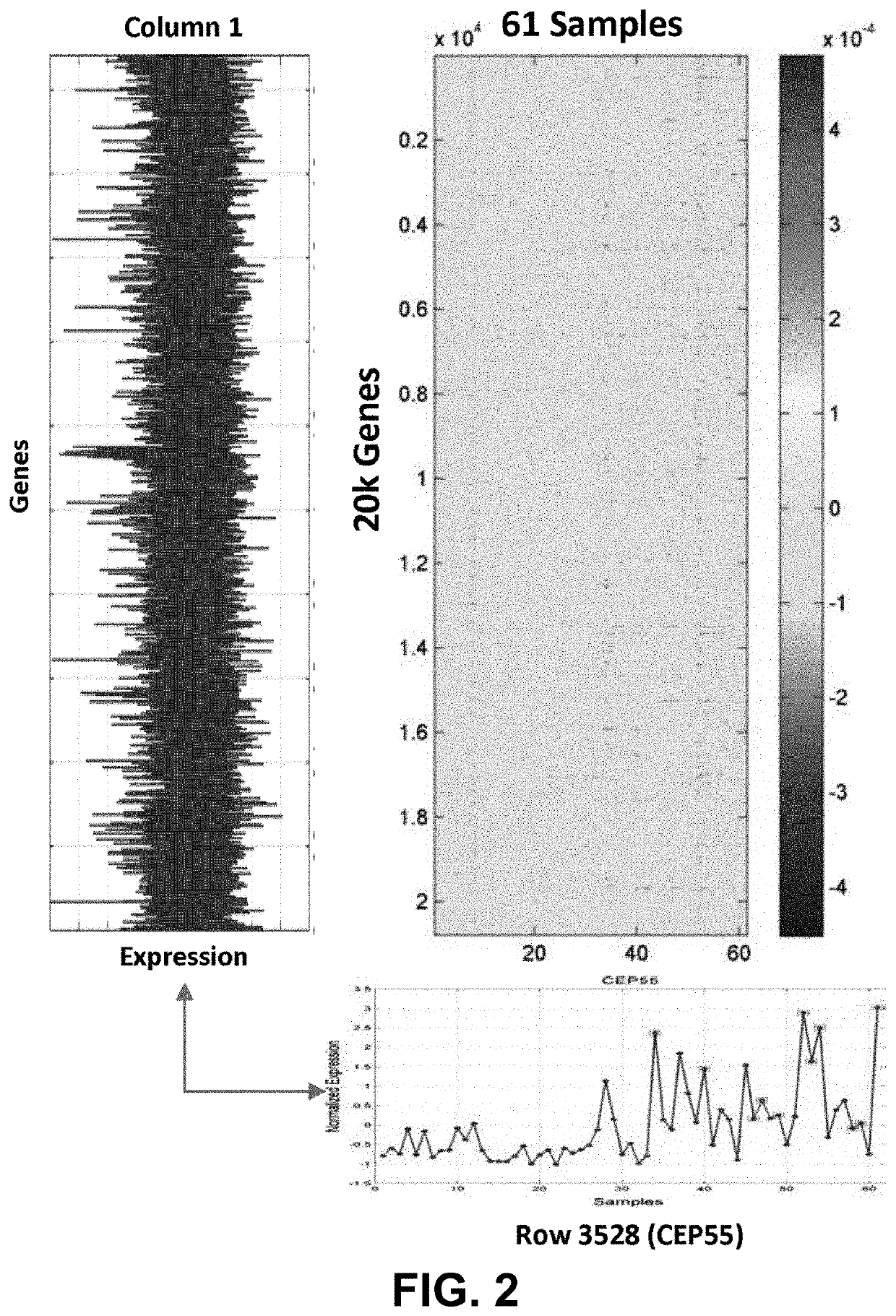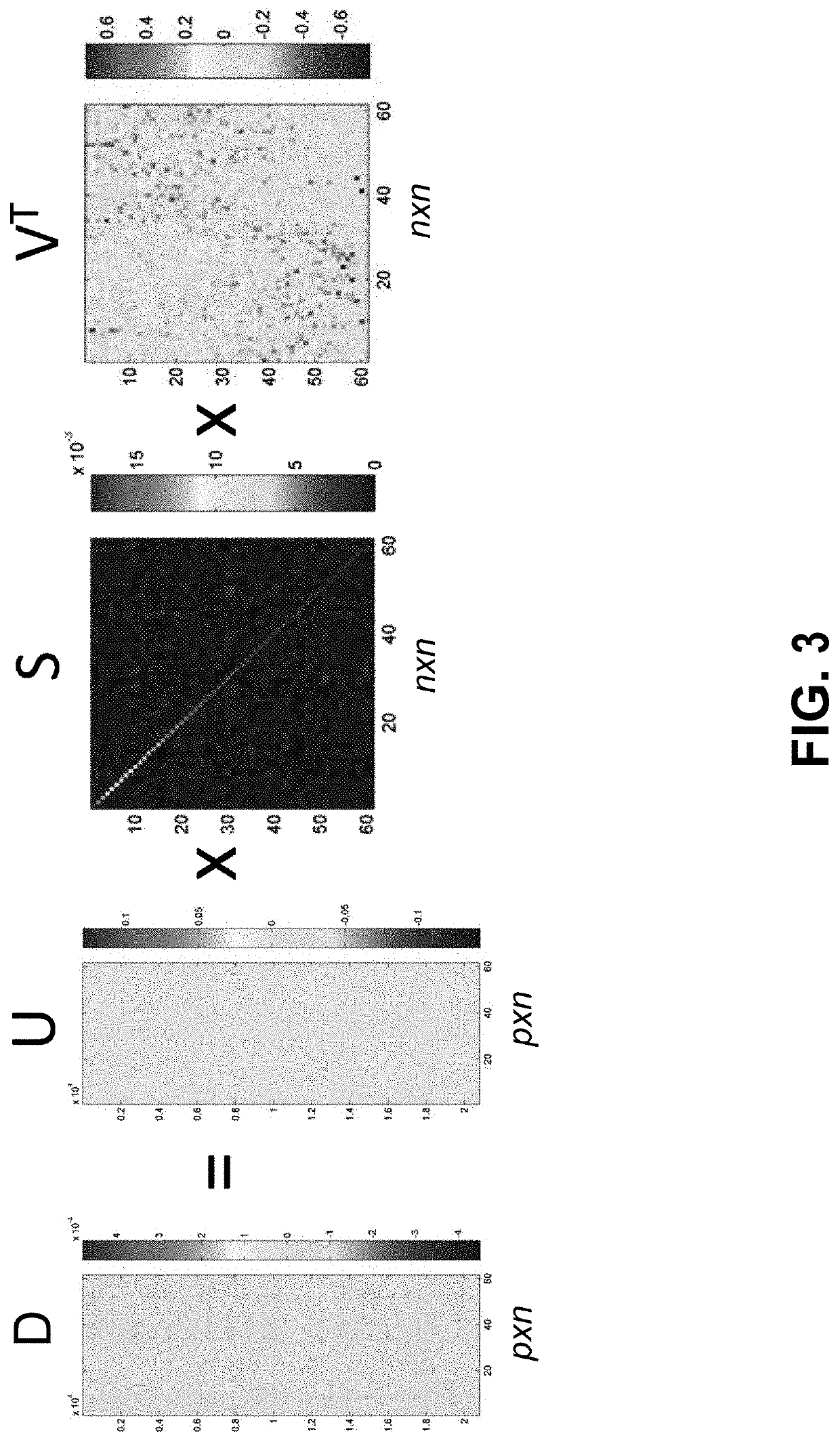Joint analysis of multiple high-dimensional data using sparse matrix approximations of rank-1
- Summary
- Abstract
- Description
- Claims
- Application Information
AI Technical Summary
Benefits of technology
Problems solved by technology
Method used
Image
Examples
example 1
JAMMIT Performance on Simulated Data
[0157]This example evaluates the effectiveness of JAMMIT to detect multiple signals in simulated data sets. This example also compares the effectiveness of JAMMIT to other algorithms such the Joint and Individual Variation Explained (JIVE) and Partial Least Squares (PLS).
[0158]JIVE is a generalization of principal components analysis (PCA) to multiple data matrices. Like JAMMIT, PLS enables the supervised analysis of one matrix by another matrix and is also used for the analysis high-dimensional data sets. All three algorithms were applied to the same collection of 1000 simulated MDS's (see Methods section, Simulated Data) and tasked to detect two sparsely supported signals (denoted by SS1 and SS2) over a wide-range of randomly selected SNR scenarios. Recall SS1 is based on a noisy step signal supported by a sparse subset of rows in both simulated data matrices that clusters the 50 simulated samples into two well-defined groups. SS2 is a random si...
example 2
JAMMIT Analysis of Ovarian Cancer Data from TCGA
[0172]This example describes application of JAMMIT to MMDS for ovarian cancer.
[0173]MMDS for ovarian cancer was downloaded from TCGA resulted in novel, low-dimensional signatures that linked overall survival to immune-cell morphology and macrophage polarization in the tumor microenvironment. Genome-wide mRNA, microRNA and DNA methylation data obtained from 291 tumor samples from patients with clinical stage 3 serous ovarian cancer were downloaded from TCGA (http: / / cancergenome.nih.gov / ). This data download resulted in three high-dimensional data matrices of dimensions 16020×291 (mRNA), 799×291 (microRNA) and 15418×291 (DNA methylation) that were combined to form an ovarian MMDS denoted by DOVCA Meta-data for each patient, which included censored survival time, age, tumor stage and treatment data, were also downloaded from TCGA and aligned with the super-matrix of DOVCA. Subsequent to the assembly of DOVCA, whole-genome mRNA data for an...
example 3
Imaging Genomics of Liver Cancer
[0189]This example describes JAMMIT analysis of whole-genome mRNA and PET imaging data for liver cancer.
[0190]FIG. 21 outlines JAMMIT analysis of whole-genome mRNA and PET imaging data for liver cancer. Twenty patients referred for surgical resection of liver tumors were prospectively recruited to participate in an institutional review-board approved clinical research study with written informed consent. Prior to surgery, these patients underwent liver imaging with a Philips Gemini TF-64 PET / CT scanner (Philips Healthcare, Andover, Mass.) using 18F-fluorocholine under an investigational new drug protocol. In a previous single-institution clinical trial, 18F-fluorocholine, a tracer of choline phospholipid synthesis, affords PET / CT with relatively high diagnostic sensitivity for HCCs. Presently, less is known regarding the diagnostic utility of 18F-fluorocholine for ICCs and other sub-types of liver cancer. Regions of interest (ROI) analysis of the PET / ...
PUM
 Login to View More
Login to View More Abstract
Description
Claims
Application Information
 Login to View More
Login to View More - R&D Engineer
- R&D Manager
- IP Professional
- Industry Leading Data Capabilities
- Powerful AI technology
- Patent DNA Extraction
Browse by: Latest US Patents, China's latest patents, Technical Efficacy Thesaurus, Application Domain, Technology Topic, Popular Technical Reports.
© 2024 PatSnap. All rights reserved.Legal|Privacy policy|Modern Slavery Act Transparency Statement|Sitemap|About US| Contact US: help@patsnap.com










